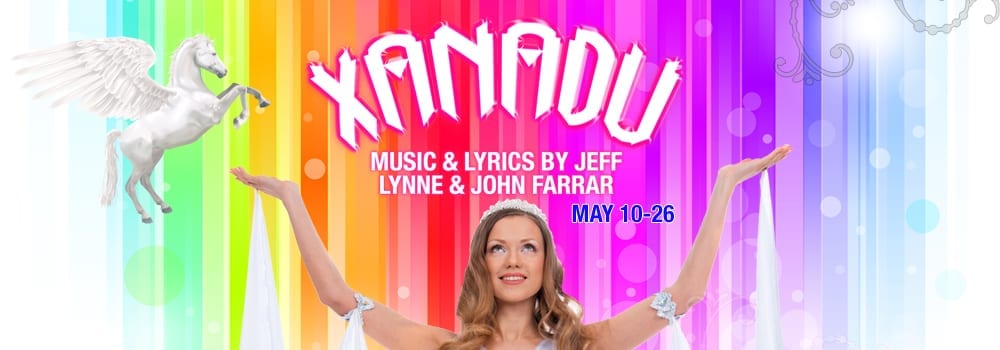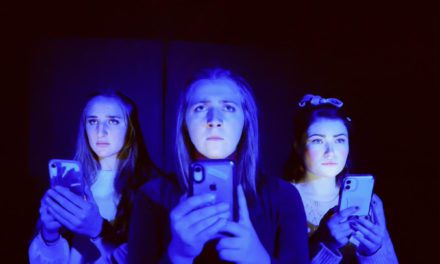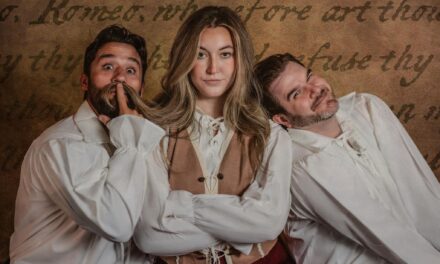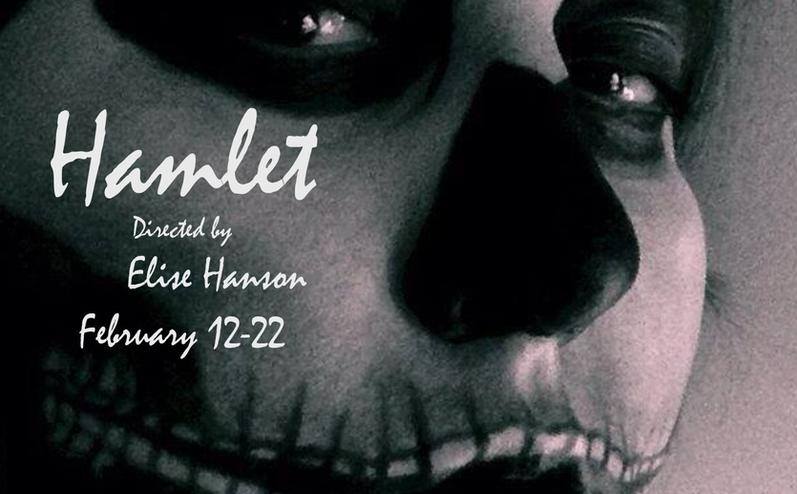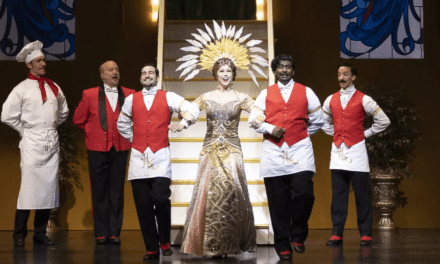SALT LAKE CITY — Based on a failed movie with a great soundtrack, the stage production of Xanadu offers a simple plot with plenty of humor and production numbers around every corner. Following the story of depressed artist Sonny Malone and the Muse assigned to inspire him, Xanadu is a fast-paced journey through rollerskates, Greek mythology, and a helping of 1980’s pop culture. While poking fun at itself, the ’80s, and the whole of artistic creation, Xanadu ultimately shows a big helping of heart as it reveals its theme, which is that Xanadu is defined as the human experience and the ability to create.
That ability to create was evident in many of the choices made by The Grand Theatre’s production staff. Van Tinkham’s stepped set design gave director/choreographer Jim Christian many levels on which to tell a visually interesting story. Megan McCormick’s lighting and Phil Lowe’s costumes both used contrasting colors to support the plot, (for example, reserving yellows for the two villains). Ben Linford’s projection and video design added a technical dimension which integrated seamlessly with the choreography and staging. While the occasional actor’s shadow on the projection caused minor distraction, this production made excellent use of visual elements to set the stage for a night of entertainment.
But like the Muses coming to life from the chalk drawing, it was the actors who brought this musical to life. Dancing to a disco beat only he seemed to hear, Sean Bishop delivered a believable, starry-eyed portrayal of the dreamer/artist Sonny. While his comic ballads with Clio/Kira (Ashley Gardner Carlson) were everything they were intended to be, Bishop really hit his stride as he belted “Don’t Walk Away” with a chorus of full harmonies backing him up. For me, this was the musical apex of the show.
Carlson was gorgeous in her pink demigod dress and sparkly leg warmers, and the natural ease she displayed on roller skates consistently amazed me. As I watched her execute the same choreography given to those standing firmly on two feet, I would often catch myself suddenly realizing that she was doing that on wheels! Carlson transitioned smoothly between her Clio voice and Kira’s Australian accent. However, she seemed to play it safe; it may have been fun to see Kira just a bit more over-the-top. I also thought that Carlson was often difficult to hear when she sang in a lower register, but she made up for it with vocal comedy which provided some of the best laughs in the show.
Two of my favorite characters were the villains Melpomene (Camille Gerber Van Wagoner) and Calliope (Shelby Andersen). Van Wagoner and Andersen delivered several hilarious duets including “Evil Woman,” and always maintained their characters during production numbers. I often found myself looking for them to see what hilarious modifications they had made to the choreography to customize it for their characters. While Van Wagoner owned the stage with her body language and comedic timing, I felt her higher notes sometimes became a little thin. In contrast, Andersen delivered every facial expression, every note, and every arm movement with complete dedication to her character. As a result, the sidekick occasionally outshone her mentor.
Some believe that a production is only as good as its weakest character. Luckily for this production, there were no weak links. Kim Blackett’s portrayal of the sold-out artist turned businessman, Danny, gave an excellent contrast to Sonny, and Nicholas Morris’s dancing as Young Danny was a highlight of the show. Each of the additional Muses (Stacia Hardy, Stephanie Jameson, William Richardson, Tanner Rampton, Liz Corona, Maggie Goertzen) and Sean J. Carter as Hermes exhibited both vocal and physical strength in this ensemble. From the first moments of “I’m Alive,” I was particularly impressed by their blend; I was never distracted by individual voices or unbalanced harmonies.
I do have to admit, however, to being confused by use of men cast as Muses. It is my understanding that this musical is written specifically for that casting, and I think it had the potential to create hilarious moments and raise the overall energy of the show. I thought Morris, Richardson, and Rampton more than held their own among the ladies, but their potential as comedic characters in the production was unreached. It seemed they were used in a “why not?” sort of way when I would l have enjoyed seeing a clear “why.”
Kevin Mathie’s work as music director occasionally allowed the actors to sacrifice musical perfection for comedy. It worked because in numbers like “Don’t Walk Away,” the actors removed any possible doubt of their musical capabilities. I was delighted to hear rich harmonies throughout the production numbers and accurate, effortless harmonies in the duets and smaller numbers. In fact, I came to expect so much of the musical numbers that I was slightly disappointed in the second act opening number. Several of the Muses were featured as soloists, but the microphone balance did not help the solos stand out. I would have loved to hear their individual talents soar above the harmonies of the ensemble.
Christian’s choreography did just what musical theatre choreography should do: it told the story. I especially enjoyed watching each Muse tell her own story within the constructs of the given choreography. Each dance had the perfect mix of crisp unison moments and moments for characterization. Christian used Carlson’s skating skills and Tinkham’s rotating set pieces expertly, creating one of my favorite moments in “Dancin’.” I have to admit, however, that after an evening of sharp, energetic choreography, I left feeling underwhelmed by the roller-finale “Xanadu.” The actors had obvious differences in their levels of comfort on skates, and many seemed in deep concentration throughout the number.
Most of the great moments in the show were created by the actors themselves. But one of the most memorable elements was the descending Pegasus which, through the onstage assistance of two ensemble members, seemed to fly across the projected sky. For all those involved in that decision and execution, I thank you for that moment of pure entertainment.
My disappointments with this production were minor. The small, on-stage orchestra played expertly and was dynamically well-balanced with the cast. However, I expected a certain energy from having a live orchestra, and with the exception of the Act I finale, “Don’t Walk Away,” they just didn’t quite deliver. And while I was impressed with the overall quality of the microphones and sound, I was disappointed by the technical glitch which left Blackett without amplified sound for his entire introductory scene and song.
All in all, The Grand Theatre’s production of Xanadu was great fun supported by great talent, and I’d recommend it to anyone who’s willing to laugh at the expense of art itself. For a grand night of glitter, roller-disco, and laughs, be sure to catch this production as it runs through May 26.

